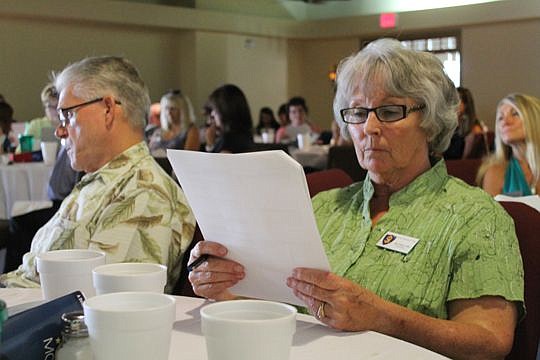
Gail Dasta nodded as she looked over the new closing forms for home purchases, which are required after several Dodd-Frank-inspired regulations kick in this year.
“I like these,” she murmured. “It’s much clearer for the buyer.”
An agent with Salus Realty in Orange Park, Dasta was at a seminar sponsored by Northeast Florida Association of Realtors’ Southwest Council, where Realtors learned what effect the new forms would have on them.
Now, Dasta will have a little more time to digest the information.
The Consumer Finance Protection Bureau has proposed the deadline be moved from Aug. 1 to Oct. 3 for implementing new TILA-RESPA disclosure forms.
Bureau Director Richard Cordray issued a statement in June proposing that the “Know Before You Owe” rule become effective at the later date in order to “correct an administrative error” that would have delayed implementation anyway.
Also he said the agency believed a delay “would better accommodate” consumers, the industry and their families during the busy homebuying season heading into the start of the school year.
His reasoning closely resembled the wording of a May request by the National Association of Realtors, which asked for an enforcement grace period through the end of 2015.
It asked to “delay enforcement to the slower winter months when fewer consumers would be negatively impacted,” NAR said in a statement. Even if only 10 percent of transactions experience closing issues from the new rules, it would mean as many as 40,000 transactions a month, according to the association.
A day after the CFPB announcement, NEFAR president Sally Suslak said she was happy to hear about it.
“I think agents are ready, but the people doing the closing statements may need more time to figure this out,” she said.
Suslak is the broker for Traditions Realty. The Riverside company has hosted three seminars for their agents and the rules have changed a little each time, Suslak said.
Realtors will rely on the closing agents and lenders to define the process, Suslak said. That puts the heaviest burden on the vendors, not so much on the Realtors.
Even so, Realtors are busy getting trained through presentations offered by mortgage companies, NEFAR and other professional associations.
Bruce Wehner, sales manager at Franklin American Mortgage Co., said he doesn’t think the delay is needed. His company is ready to use the new forms now.
“Just get on with it,” he said.
It was a sentiment echoed by Sue Dutcher, who ran the Southwest Council’s seminar.
An associate Florida agency sales manager for First American Title Insurance Co., Dutcher’s company has been working with the CFPB on the new rules for more than two years.
“They were telling us for months — tell people nothing will change, this is going to happen,” she said. “And I did.”
Right up until the proposed delay.
Still, some of Dutcher’s statements reveal she does expect a few bumps in the road.
Realtors should plan for a 45- to 60-day period for closing rather than a 30-day period.
“Because, no one has any practice doing this,” she said.
Also, she sees simultaneous closings, which are common in Florida for relocations, coming to an end.
“I don’t think chances are good that everybody is going to be closing the same day, because of timing,” she said.
She told Realtors to start thinking about writing contracts with post-occupancy addendum instead. In states where post-occupancy is the norm, sellers may live in the house three to five days for free after the closing.
Despite the difficulties, Dutcher said the new forms are a good thing. They make it easier for people to understand how much money they need to bring to closing, what those costs are and what those costs entail.
“It really will be better,” she said. There will just be a learning curve.
(904) 356-2466